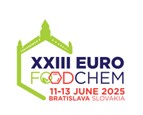Scientific journal
Journal of Food and Nutrition Research
Summary No. 1 / 2022
Alparslan, Y. – Metin, C. – Baygar, T.
Sex- and season-based comparison of lipid and fatty acid profiles of blue crab meat
Journal of Food and Nutrition Research, 61, 2022, No. 1, s. 27-33
Yunus Alparslan, Department of Seafood Processing Technology, Faculty of Fisheries, Mugla Sitki Kocman University, Sitki Kocman Street, 48000 Mugla, Turkey. E-mail: yunusalparslan@mu.edu.tr
Received 15 June 2021; 1st revised 19 November 2021; accepted 8 December 2021; published online 18 January 2022.
Summary: Effects of sex and harvesting season on the lipid and fatty acid profiles of the adult blue crab (Callinectes sapidus) muscle from Koycegiz Lagoon (Mugla, Turkey) were investigated using gas chromatography. Lipid contents of female samples were significantly higher (p < 0.05) than male samples for all season. The dominant fatty acids were eicosapentaenoic acid (EPA,
Keywords: Callinectes sapidus, fatty acid profile; eicosapentaenoic acid; docosahexaenoic acid
Download:
(pdf, 233.76 Kb, 2084x)










